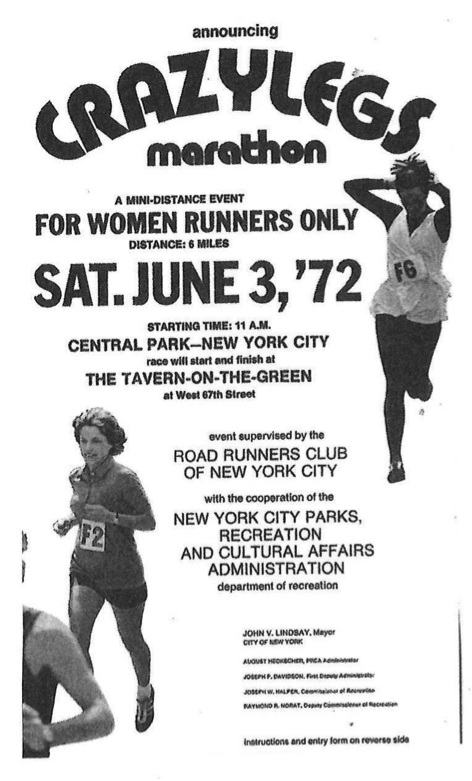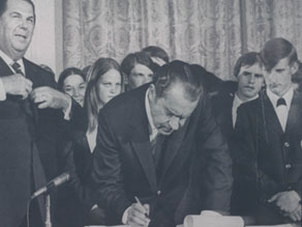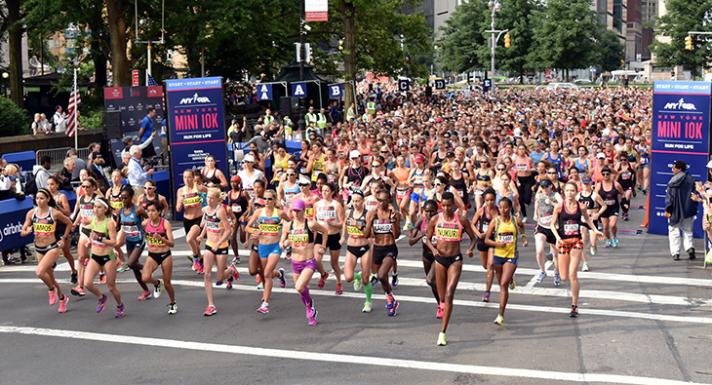mini-history of the Mini 10K
On June 3rd, 1972…
the Road Runners’ Club of New York hosted the first all-women’s road race in the US. The Crazylegs Mini Marathon was largely conceived as a publicity stunt by Fred Lebow — one that featured Playboy Bunnies in running shoes, and which was sponsored by a new (pink) shaving cream product for women.
Entrants were encouraged to wear miniskirts, and much of the publicity leading up to the event would fall under the category of “sex sells.” At a pre-race event a reporter asked Kathrine Switzer to hike up her skirt to show off her legs. She declined.
None of this would seem to set the stage for a watershed moment in women’s athletics, yet for the 78 women at the starting line that day, it was a celebration of freedom. For the first time in history, they would be running a race of their own, not hiding under hats and loose clothing, or fighting for their right to run more than 800 meters. The 6-mile Central Park loop was theirs to run.
Despite Lebow’s hype for the race, the event drew little interest from the public and there were fewer spectators than runners in attendance. No aid stations were provided on 6-mile course, and several women resorted to buying water from park vendors. The New York Times article reporting the Mini included the observation that the sixth place woman had difficulty with her eyeshadow smearing.
It’s hard to appreciate just how different the landscape of women’s running was in 1972, but the shift was already in motion that June.
The race was only possible because a few months earlier the Amateur Athletic Union had reversed a decision that prohibited women from running races longer than a mile and a half. (Until that time, it was generally accepted that running long distances jeopardized women’s fertility).
In April of that year, selected women were allowed to run the Boston Marathon for the first time, six years after Roberta Gibb bandited the race, and five years after the runner registered as “K.V.” Switzer was nearly forcibly removed from the course by the race director.
Less than three weeks after the first Mini, the Education Amendments of 1972 were signed into law. Their Title IX clause guaranteed that “No person in the United States shall, on the basis of sex, be excluded from participation in, be denied the benefits of, or be subjected to discrimination under any education program or activity receiving Federal financial assistance,” and resulted in the creation and funding of women’s sports teams in schools and universities across the country.
A further stride in women’s running was made in November of 1972, when the six female entrants of the New York City Marathon sat down at the start line, protesting the AAU rule that required women to start separately from men.
This time, the New York Times race coverage would feature the women’s protest and athletic achievement, and made no mention of makeup mishaps.
The AAU also took notice of the protest, overturning the separate-start rule shortly after the marathon and finally allowing women to run alongside men.
This Saturday, Central Park will again belong to the ladies, including a deep professional field. Whether you’re running or cheering, remember to throw in extra surge for the women of 1972 who got us to the start line.
—Coach Molly Forr
June 5, 2019






